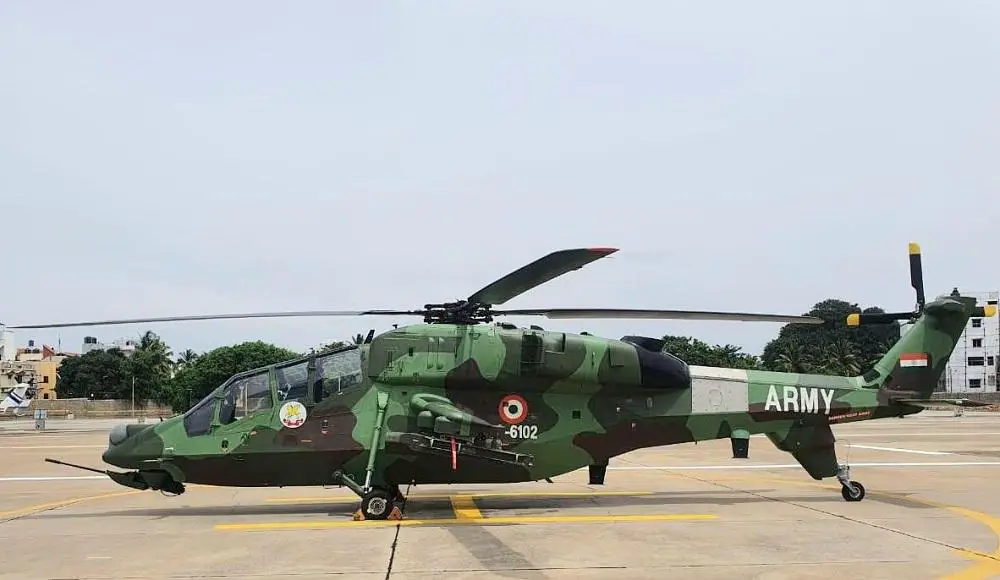The Indian Army has inducted an indigenously developed Hindustan Aeronautics Limited (HAL) Light Combat Helicopter (LCH) aimed at strengthening the troops’ combat capabilities. The new attack helicopter is equipped with agility and manoeuvrability, and offers high altitude performance. The first LCH was handed over by the HAL to Indian Army Aviation Director General Lieutenant General AK Suri. The HAL Light Combat Helicopter (LCH) is an Indian multi-role attack helicopter designed and manufactured by the Hindustan Aeronautics Limited (HAL). The LCH has been ordered by the Indian Air Force (IAF) and the Indian Army. Its flight ceiling is the highest among all attack helicopters. The LCH was declared ready for production in February 2020.
The HAL Light Combat Helicopter (LCH) drew extensively on an earlier indigenous helicopter developed and manufactured by HAL, the Dhruv utility helicopter; using this rotorcraft as a starting point has been attributed as significantly reducing the cost of the programme. On 29 March 2010, the first prototype performed its maiden flight. An extensive test programme, involving a total of four prototypes, was conducted. During the course of these tests, the LCH gained the distinction of being the first attack helicopter to land in Siachen, having repeatedly landed at several high altitude helipads, some of which being as high as 13,600 feet (4145 meters) to 15,800 feet (4815 meters).

Equipped with a two-person tandem cockpit to accommodate a pilot and co-pilot/gunner, it has been developed to perform both the anti-infantry and anti-armour missions. In addition to these roles, the LCH is intended to be used for a variety of operational purposes, such as to perform air defence against slow-moving aerial targets, including both manned aircraft and unmanned aerial vehicles (UAVs), participation in counter-insurgency operations (COIN) and Counter Surface Force Operations (CSFO), the destruction of enemy air defence operations and wider offensive use during urban warfare conditions, escort to special heliborne operations (SHBO), support of combat search and rescue (CSAR) operations, and armed aerial scouting duties.
HAL had selected the M621 cannon to serve as the gun armament of the helicopter. The M621 cannon is incorporated in a Nexter-built THL 20 turret and integrated into a helmet-mounted sight. Various missiles can also be equipped upon the LCH; these include a maximum of four 70 mm anti-tank guided missiles, the latter in the form of the Helina anti-tank missile. In terms of air-to-air missiles, the LCH shall be capable of being armed with the MBDA Mistral 2 missile. The LCH is protected via an extensive electronic warfare suite which is provided by the South African division of Saab Group. The LCH is furnished with a glass cockpit which accommodates an Integrated Avionics and Display System (IADS) in conjunction with the onboard target acquisition and designation (TADS) system.












